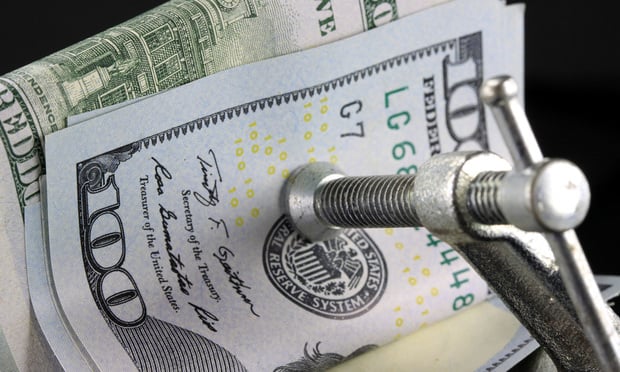Robert Bach, senior vice president and chief economist at Grubb & Ellis, tells GlobeSt.com that the rate at which sublease office space is climbing is "a really telling statistic," especially when today's rate of increase is compared with that of the downturn that began in the year 2000. Before anyone gets too excited and jumps to the conclusion that the slowly climbing sublease numbers are a sign that today's office market is much better off than the office market of the previous downturn, Bach has some words of caution.
"A lot of people are saying that the office market is in a better position now than it was in 2000 to 2001, but I don't buy that," Bach says. "The sublease statistics suggest to me that the market is really in a much different position than it was in the last downturn, but that doesn't necessarily mean that it's in a better position."
Bach explains the amount of sublease space is rising very gradually today whereas it was "skyrocketing" in the previous downturn--rising about 1% per quarter for awhile. However, the last downturn started out from a much lower overall vacancy standpoint. When the downturn began in 2000, the overall US vacancy rate stood at 8.5%. In contrast, the vacancy rate stood at 13.5% when the latest downturn began about three quarters ago for this cycle. In other words, the US already had a lot more empty space at the start of this downturn than it had at the start of the last one.
This doesn't mean that Bach believes the office market is worse in all respects this time around. It just means that "the office market overall is going to behave differently in this downturn than it did in the last one," the Grubb & Ellis chief economist says. "The good news is that this looks like this is going to be a shallow downturn."
The economy has lost jobs for four months now, but it is losing them at a significantly lower rate than it did in the earlier downturn. And with sublease space rising more slowly, it is having less of an effect on office rents, not driving them down as far or as fast as it did previously, according to Bach.
"This time around, rents are softening and concessions are going up, but sublease is playing less of a role than it did the last time," Bach says. He adds, however, it's always difficult to calculate exactly how much the flattening or decline of rental rates results from sublease space versus direct space and how much of the decline results from the generally weakening of the office market.
Another factor will be how high the US office vacancy rate ultimately rises in this downturn before it starts to recover. The last time around, the country's vacancy rate rose from 8.5% at the start of the downturn to 17.9% before it started turning around in 2004. "The vacancy rate is going to rise, but possibly not to the extent that it did then," Bach says.
Bach's latest figures show that office sublease space for the entire US has increased by 12% from the three quarters since its low in second quarter 2007, ending first quarter 2008 at 81.9 million sf. In the 2001 downturn, sublease space had more than doubled after three quarters of softening.
As in all statistical studies that track the entire US, however, the nationwide sublease figures include some wide variations on a market-by-market basis. And looking at sublease space on the basis of a percentage increase can be misleading because some markets with some of the biggest percentage leaps have some of the smallest increases in terms of actual square footage of space.
For example, San Antonio and Austin, TX have posted some of the highest percentage increases lately, with both more than doubling on a percentage basis during the past three quarters. But the actual amount of increase for San Antonio was very low, rising only from 75,000 sf to 178,000 sf on a base inventory of 24 million sf. Austin's gain was larger--326,000 sf to 858,000 sf on a base inventory of 41 million sf. By contrast, the percentage of increase in Los Angeles was less than 2%, but that works out to more than one million sf of the 185-million-sf base in Los Angeles.
Job losses thus far have been shallow and sublease space is rising gradually are both encouraging signs, according to Bach. He says how high vacancy and sublease rates go will depend primarily on employment trends, which are reflected in monthly statistics from the federal government. "The future of the office market and the future of the sublease inventory really depend on numbers like that," he says.
© Touchpoint Markets, All Rights Reserved. Request academic re-use from www.copyright.com. All other uses, submit a request to [email protected]. For more inforrmation visit Asset & Logo Licensing.






